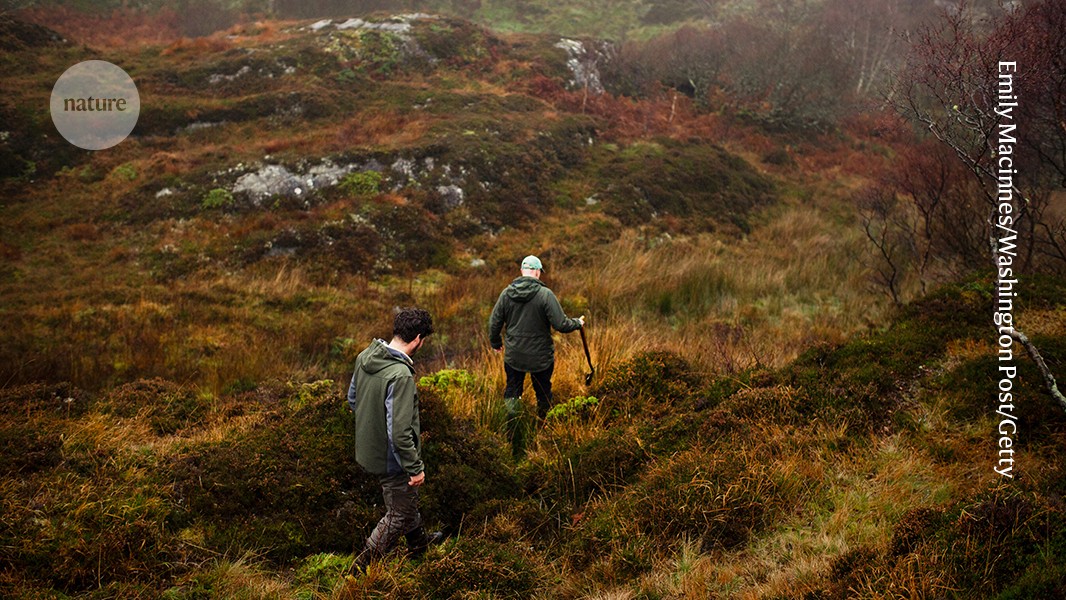How to build nature back better — read this manual

By clearing the confusion, this comprehensive guide can help businesses to do more for nature
Becoming Nature Positive: Transitioning to a Safe and Just Future Edited by Peter Vanham, Ross Chainey and Gemma Parkes Routledge (2025)
As biodiversity loss accelerates alongside the climate crisis, businesses are increasingly recognizing their role in both causing and potentially solving this planetary emergency. The scale of the problem is stark: humans and our livestock now make up around 96% of all land-based mammal biomass, leaving just 4% for the world’s remaining wild species. But progress in combating such losses remains too slow.
Becoming Nature Positive offers an ambitious, timely and comprehensive guide for organizations seeking not only to reduce harms but also to regenerate nature in an active way. With more than two dozen contributors, this volume provides both theoretical grounding and practical strategies. It comes at a crucial time, as the world is working out how to meet the goal of the 2022 Kunming–Montreal Global Biodiversity Framework to protect 30% of land and sea by 2030.
In the opening sections, Marco Lambertini, convenor of the Nature Positive Initiative and former director-general of WWF, the conservation group headquartered in Gland, Switzerland, traces the story of the ‘nature positive’ movement. This growing global community is committed to doing more than halting and reversing biodiversity loss: its aim is that, by 2030, the world has more nature than it did in 2020 and, by 2050, all ecosystems will have recovered.
Lambertini charts the movement’s emergence through early United Nations initiatives, such as the Decade on Biodiversity in the 2010s, through to the pivotal 2019 meetings in Davos, Switzerland, leading to biodiversity loss appearing as a top-ten issue for the first time in the 2020 World Economic Forum’s Global Risks Report. The adoption of the 30% goal under the Convention on Biological Diversity in 2022 was a step as groundbreaking for nature as the 2015 Paris climate agreement was for climate.
But much remains to be done, as global assessments continue to show. The UN Environment Programme’s 2024 Protected Planet Report (see go.nature.com/3hc330h) reveals that 17.6% of land and 8.4% of ocean areas are now protected — an increase since 2020 that is equivalent to twice Colombia’s size. But to meet the target, this still leaves areas the size of Brazil and Australia combined on land, and an area larger than the Indian Ocean at sea, requiring protected designation by 2030.
Pragmatic solutions
What distinguishes this compilation from many others is its refusal to promise simple solutions, instead acknowledging the complexity and scale of change required across business, finance, policy and society at large.
The book’s honest assessment of implementation barriers is particularly valuable. The authors acknowledge that, despite increasing corporate commitments, large gaps remain between rhetoric and action. By 2021, only 10% of firms in the Fortune 100 list of top US companies by revenue had specific, measurable, time-bound biodiversity targets. That’s twice as many as in 2016, but progress is much too slow (S. O. S. E. zu Ermgassen et al. J. Clean. Prod. 379, 134798 (2022); see also go.nature.com/47vfnw3).
Examples of what can work are offered in Eva Zabey’s excellent chapter on business engagement. As chief executive of Business for Nature, a business coalition driving nature-positive action on the global stage, Zabey provides an insider’s perspective on the corporate awakening to biodiversity issues. She goes beyond categorizing businesses as either part of the problem or part of the solution, to explore the nuanced reality of different business types.

The peaks of Cuernos del Paine in the Torres del Paine National Park in Chile.Credit: Marco Bottigelli/Getty
Large companies, for instance, have the resources, scale and reach through their supply chains to drive significant environmental gains quickly, if they integrate nature-positive practices into their core strategies. Smaller firms can be more agile, piloting innovative approaches and influencing local economies and communities.
Purpose-led businesses often set ambitious standards and lead by example, whereas profit-driven firms can shift entire markets when regulations and incentives align. Some companies will transform their value chains and set global benchmarks. Others will pioneer innovative business models or foster grassroots change. Zabey makes clear that actions from all types of company are needed to move the nature needle in the right direction.
Zabey also demonstrates how language enables, as well as shapes, action. Her discussion of how concepts such as natural capital (the value of everything that comes from the natural world) and ecosystem services (the direct benefits people receive from nature, including fresh air to breathe) have enabled business participation is insightful.
Such terms translate matters of ecological concern into economic and managerial language that resonates with corporate decision makers. Similarly, framing a wetland as ‘flood protection infrastructure’ recasts the natural world as an asset class or service provider, and thus makes it easier to integrate biodiversity into business models, investment decisions and policy frameworks.
Clear thinking
Indeed, competing definitions of nature positive have been a challenge, creating a blind spot in which businesses and policymakers can talk past each other or measure progress differently. Some businesses focus on reducing harms, others on restoration, and yet others consider a more general sustainability agenda. Such confusion elevates the risk of ‘greenwashing’, in which companies portray themselves as acting on sustainability when they are, in fact, doing little. It paints an unclear picture for those setting policy agendas and misses opportunities for collaboration.
Enjoying our latest content?
Login or create an account to continue
- Access the most recent journalism from Nature's award-winning team
- Explore the latest features & opinion covering groundbreaking research
or
Sign in or create an accountNature 645, 304-306 (2025)
doi: https://doi.org/10.1038/d41586-025-02815-0
This story originally appeared on: Nature - Author:Ryan Nolan














